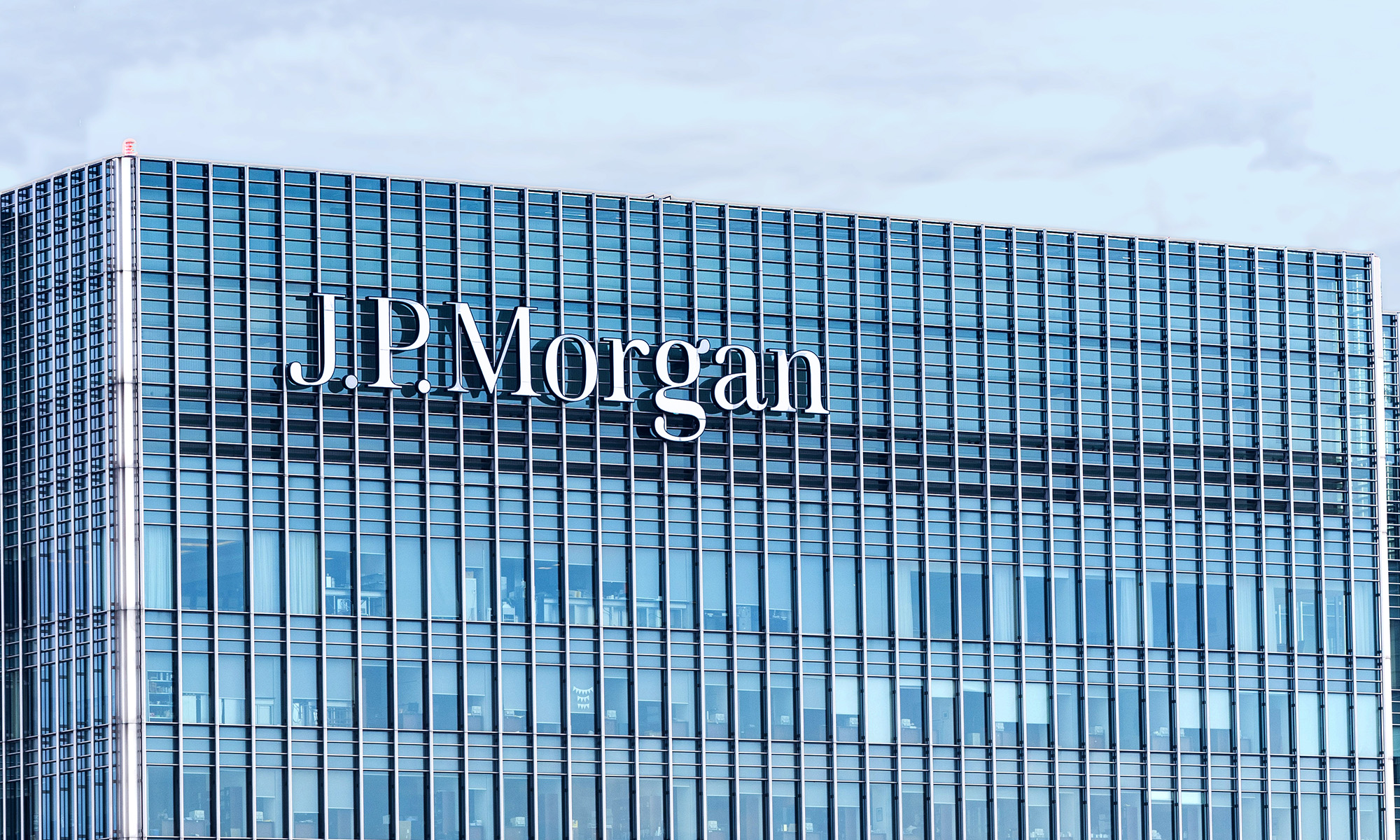If you were to take a cursory glance at JPMorgan Chase's (JPM +0.36%) valuation, you'd be excused for concluding that its shares are cheap. Yet the deeper you dig into the reasons why its shares trade at such a seemingly modest valuation, the more you come away with the suspicion that the nation's biggest bank by assets isn't as cheap as it may otherwise seem.
Valuing JPMorgan Chase
The best valuation metric to use when determining this is the price-to-earnings ratio, or P/E ratio. This is calculated by dividing a bank's share price by its projected earnings per share over the next 12 months. Holding all else equal, the lower the ratio, the cheaper the stock.
In JPMorgan Chase's case, its forward P/E ratio weighs in at 14.11. This means it costs $14.11 to buy $1 worth of JPMorgan's 12-month earnings.

Data source: YCharts.com. Chart by author.
That may sound like a hefty price tag, but it's actually quite reasonable when compared to other stocks. The average large-cap bank on the KBW Bank Index, which tracks two dozen of the nation's biggest banks, trades for 15.8 times forward earnings. The average large-cap stock, more generally -- i.e., those on the S&P 500 -- changes hands at an even higher multiple -- 23.9, to be precise.
Is JPMorgan Chase stock actually cheap?
Given these comparisons, it's tempting to conclude that shares of JPMorgan Chase are cheap -- at least relative to other stocks. Yet if you explore the reasons why JPMorgan's stock trades at such a modest multiple to earnings, it becomes clear that there are legitimate explanations for the difference.
In the first case, JPMorgan Chase is already huge, limiting how quickly it can grow relative to smaller banks. The biggest barrier in this regard is the legislative cap on domestic deposits. This prohibits banks that hold more than 10% of the nation's deposits from acquiring other banks.

Chase Tower in Phoenix, Arizona. Image source: Getty Images.
Three banks currently exceed this threshold: JPMorgan Chase, Bank of America, and Wells Fargo. Thus, while smaller banks can grow both organically and through mergers and acquisitions, JPMorgan Chase and its two too-big-to-fail peers are limited to organic growth to drive their shares higher.
The second reason is that JPMorgan Chase is subject to much tighter regulatory scrutiny on account of its size. Most importantly, as a global systematically important bank, or G-SIB, it's one of only eight banks that are obligated to hold more capital than their smaller, simpler peers. Its so-called G-SIB surcharge will be 3.5% once it fully phases in over the next couple of years. That equates to $50 billion worth of capital that can't be profitably deployed by the New York-based bank.
Thus, while it's true that shares of JPMorgan Chase may seem cheap, once you take these two factors into consideration, it looks more and more like they may be reasonably priced.






